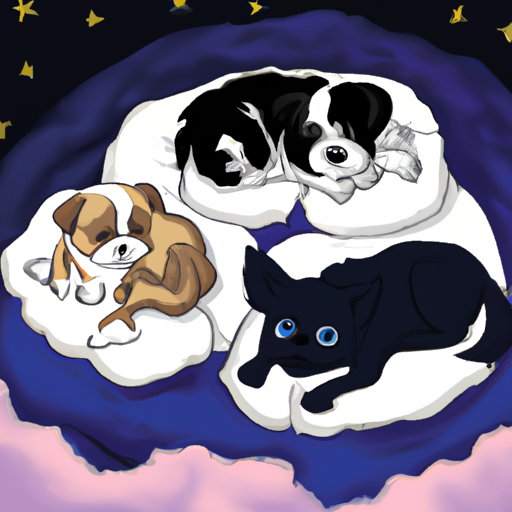Have you ever looked at your furry companion curled up in a tight ball and wondered why they sleep that way? As a caregiver, understanding their behavior can deepen the bond you share with your pet. Let’s unravel this canine mystery together.
Table of Contents
- The Science Behind the Curl
- The Influence of Wild Ancestors
- The Role of Temperature
- Conserving Energy and Protecting Vital Organs
- Comfort and Security
- Health Implications
- Frequently Asked Questions
Key Takeaways
- Dogs curl up when sleeping due to instinctual habits inherited from their wild ancestors.
- The curled sleeping position helps dogs to preserve body heat and protect vital organs.
- Changes in a dog’s sleeping position may indicate health concerns.
The Science Behind the Curl
Have you ever considered that the way your dog sleeps could be linked to their survival instincts? Studies suggest that the curled-up sleeping position is ingrained in canine DNA, tracing back to their wild ancestors.
The Influence of Wild Ancestors
Long before dogs were domesticated, their wild ancestors had to survive in harsh environments. Sleeping curled up was a tactical move, allowing them to protect their bellies and vital organs from predators. It’s fascinating how our domestic dogs retained this sleeping position, even though they’re now safe and sound in our homes. Learn more about this in OneTopDog’s article on dog behaviors and their origins.
The Role of Temperature
Just like humans, dogs are warm-blooded creatures. In colder weather, they curl up to conserve body heat, transforming into a cute, furry ball. They tuck their legs into their bodies and wrap their tails around their faces, creating their own little heat source. It’s the same reason you might curl up under a blanket on a chilly night.
Conserving Energy and Protecting Vital Organs
When dogs curl up, they are also conserving energy. This position allows them to spring into action more quickly if they need to. Remember, survival instincts are hard-wired into their brains!
Additionally, this position shields their vital organs. It’s a protective stance, giving them a sense of safety and security.
Comfort and Security
Dogs, just like humans, need to feel safe and secure when they sleep. That’s why they often seek out cozy, enclosed spaces. A dog bed that’s just the right size can provide this sense of security. For more advice on choosing the right dog bed, check out OneTopDog’s guide.
Health Implications
It’s essential to note that while curling up is normal, sudden changes in your dog’s sleeping positions might indicate discomfort or health issues. If your dog usually sprawls out but suddenly starts curling up, it’s worth a visit to the vet. This could be a sign of pain, discomfort, or a drop in body temperature. You can find more on recognizing signs of discomfort in dogs in this article.
Frequently Asked Questions
-
Why does my dog curl up next to me?
Dogs are naturally social animals. They curl up next to their owners for warmth, comfort, and bonding. -
What does it mean if my dog doesn’t curl up when sleeping?
Not all dogs curl up when they sleep. Some prefer to sprawl out, especially in a warm environment. It’s nothing to worry about unless there’s a sudden change in their usual sleeping position. -
Why does my dog sleep on its back?
Dogs sleep on their backs to cool off, as their belly fur is thinner and exposes their sweat glands. It’s also a sign of feeling secure and comfortable.
Understanding your dog’s behavior helps you connect with them on a deeper level. Remember, you’re their primary caregiver and they rely on you for their well-being. So keep observing, keep learning, and keep loving your furry friend.



